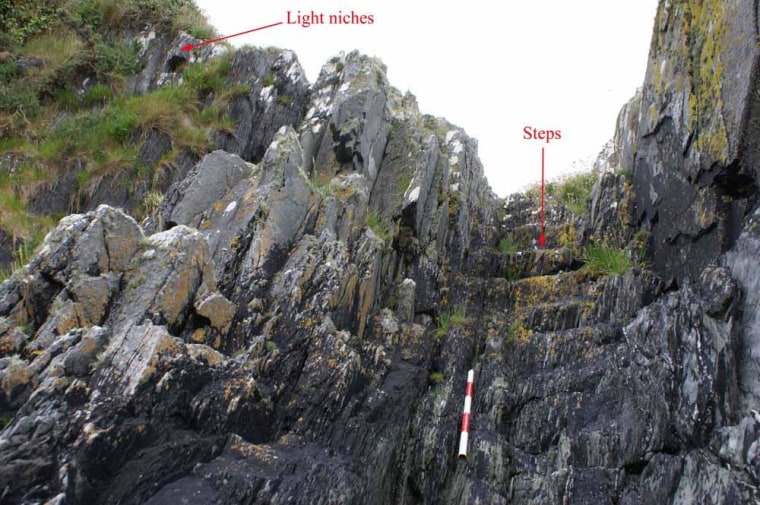
In the early 17th century, a pirate alliance preyed on ships laden with treasure, outmatched Britain's Royal Navy, elected their own admiral — and ultimately was destroyed in a cataclysmic battle against a Dutch fleet in 1614. Archaeological and historical research is now revealing new details about the pirates' adventures on the southwest coast of Ireland.
Among the recent archaeological discoveries that may be connected to the alliance are two remote sites, each with a set of stairs reaching almost to the sea. One of them, located at modern-day "Dutchman's Cove," east of Baltimore, Ireland, held niches where candles or lanterns were used to signal pirates and smugglers who came in the dead of night.
Another staircase at modern-day "Gokane Point" (also called "Streek Head"), located on the edge of a headland into Crookhaven Harbor, leads to a subterranean cavern with a waterway by which boats could enter. [See Photos of the 'Pirate Alliance' Sites in Ireland]
Both archaeological sites are unexcavated. Connie Kelleher, the underwater archaeologist who explored them, said she is not sure if they date back to the early 17th century. However, they would have been used by pirates and smugglers at some point, said Kelleher, a state underwater archaeologist with the Ireland National Monuments Service's underwater archaeology unit.
"Sites like that would have been used over a very long period by pirates, smugglers and others who wanted to do secret things," Kelleher told Live Science in an email. Kelleher made Munster's early-17th-century pirates the focus of her doctoral thesis at Trinity College, Dublin, and her results are now detailed in the Journal of Maritime Archaeology. In addition to doing archaeological research, she analyzed historical records.
"One pirate haul is said to have been worth, in today's money, some $7 million," Kelleher said. "This was an amazingly lucrative commercial venture, and this is why it was so successful."
— Owen Jarus, Live Science
This is a condensed version of a report from Live Science. Read the full story. Follow Live Science on Twitter, Facebook and Google+.
